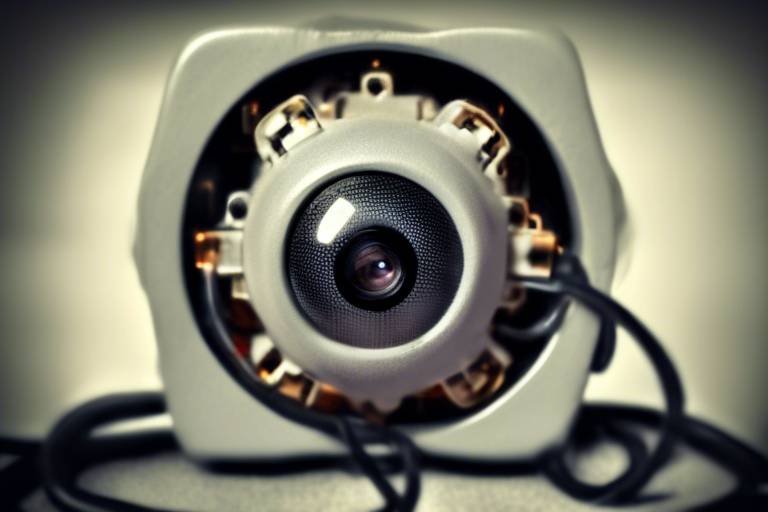Is Your Home Network Secure?
In today's digital age, the question of whether your home network is secure is more important than ever. With so many of us relying on the internet for work, entertainment, and communication, a compromised network can lead to devastating consequences. Imagine your personal information, family photos, and financial details falling into the hands of cybercriminals. It’s a nightmare scenario, right? That’s why understanding the importance of home network security and taking proactive measures to protect it is crucial.
Home networks are often seen as a safe haven, but they can be vulnerable to a variety of threats. From unauthorized access to malware attacks, the risks are real and ever-present. Think of your home network as a fortress; if the walls are weak, intruders can easily breach them. The good news is that there are effective strategies to fortify your network against these threats. In this article, we'll explore the significance of network security, identify common threats, and provide you with best practices to ensure your home network remains a safe space.
To kick things off, let’s dive into what network security really means. At its core, network security involves protecting your computer network from intruders, whether they are targeted attackers or opportunistic malware. This isn't just about installing antivirus software; it’s about creating a comprehensive security posture that includes hardware, software, and user behavior. By understanding the basic principles of network security, you can better equip yourself to defend against potential threats.
So, what are the common threats that lurk in the shadows of your home network? Well, there are several, including malware, phishing attacks, and unauthorized access. Each of these poses unique risks that can lead to data breaches and identity theft. For instance, malware can infiltrate your network through seemingly harmless downloads or email attachments, while phishing attacks can trick you into revealing sensitive information. Recognizing these threats is the first step in implementing effective security measures.
In the following sections, we will take a closer look at specific threats and best practices for securing your home network. By the end of this article, you will have the knowledge and tools needed to enhance your network security and protect your digital life.
- What is the first step I should take to secure my home network?
Start by changing the default password of your router and ensuring it uses strong encryption. - How often should I update my passwords?
It's recommended to update your passwords every three to six months and to use unique passwords for different accounts. - Is using public Wi-Fi safe?
Public Wi-Fi can be risky; use a VPN to encrypt your connection when accessing sensitive information. - What should I do if I suspect my network has been compromised?
Disconnect from the internet immediately, change your passwords, and run a full security scan on your devices.

Understanding Network Security
When we talk about network security, we're diving into a crucial realm that protects our digital lives. Think of it as the gatekeeper of your home, standing guard against unwanted intruders. Just like you wouldn't leave your front door wide open, you shouldn't leave your home network vulnerable to attacks. Network security involves a blend of technologies, policies, and practices designed to safeguard your computer networks from both targeted assailants and opportunistic malware. It's a complex dance of defense that ensures your personal information remains private and your online activities secure.
The significance of network security can't be overstated. With the increasing number of devices connected to the internet, from smart TVs to home assistants, the potential entry points for cybercriminals have multiplied. This is where the basic principles of network security come into play. At its core, network security aims to prevent unauthorized access, misuse, or denial of the network and its resources. It's like having a well-constructed wall around your property, complete with surveillance cameras and alarms. You want to create a robust environment that not only deters intruders but also alerts you to any suspicious activity.
To understand network security better, let's break it down into a few key components:
- Confidentiality: Ensuring that sensitive information is only accessible to those who are authorized to view it.
- Integrity: Protecting data from being altered or tampered with by unauthorized users.
- Availability: Ensuring that authorized users have access to information and resources when needed.
These components work together to create a secure environment where your data can thrive without the lurking threat of cyberattacks. Just like a well-oiled machine, each part of network security plays a vital role in maintaining the overall health of your digital ecosystem. By understanding these principles, you can better appreciate the importance of taking proactive measures to shield your network from potential threats.
In summary, network security is not just a technical requirement; it's a fundamental necessity in today's digital age. As we continue to rely on technology for everything from work to personal communication, being aware of the potential risks and knowing how to mitigate them is essential. So, are you ready to take the necessary steps to fortify your home network? The journey to a secure digital environment starts with understanding the basics of network security.

Common Threats to Home Networks
When it comes to securing your home network, understanding the potential threats is half the battle. Your home network, which connects various devices like smartphones, laptops, and smart home gadgets, can be a goldmine for cybercriminals if not properly protected. Imagine your home as a fortress; if the walls are weak or the gates are left open, intruders can easily slip in. The digital landscape is rife with dangers, and being aware of them can help you fortify your defenses. Let's dive into some of the most common threats that can compromise your home network.
One of the prevalent threats is malware, which encompasses a range of malicious software designed to disrupt, damage, or gain unauthorized access to your devices. Malware can sneak into your network through seemingly harmless downloads, email attachments, or even compromised websites. Once inside, it can wreak havoc, stealing sensitive data or even locking you out of your own devices. It's crucial to recognize the different types of malware that exist:
- Viruses: These can replicate themselves and spread to other devices, causing extensive damage.
- Trojans: Disguised as legitimate software, they trick users into installing them, only to unleash chaos afterward.
- Adware: While not always malicious, it can slow down your devices and invade your privacy by tracking your browsing habits.
Among these, ransomware stands out as one of the most dangerous. It locks you out of your files and demands a ransom for their release, leaving you in a vulnerable position. Imagine waking up one day to find your precious family photos or important work documents completely inaccessible, all because you clicked on the wrong link. Understanding how ransomware operates is essential for prevention; it often spreads through phishing emails or by exploiting software vulnerabilities.
Another sneaky threat is spyware, which quietly collects information from your devices without your consent. Think of it as a digital eavesdropper, lurking in the shadows and recording your every move online. It can track your browsing habits, capture your keystrokes, and even access your personal information. Detecting spyware can be tricky, but regular scans with reliable security software can help keep it at bay.
Next up is the notorious phishing attack. This is where cybercriminals trick you into revealing sensitive information, like passwords or credit card numbers, by masquerading as trustworthy entities. It often comes in the form of emails that appear to be from your bank or a popular online service. The key to avoiding phishing scams is to stay vigilant—always double-check the sender's email address and be cautious of unsolicited messages that urge you to click on links or provide personal information.
In addition to malware and phishing, home networks can also be vulnerable to unauthorized access. This occurs when someone gains access to your network without permission, potentially leading to data theft or even the hijacking of your devices. It's like leaving your front door wide open; anyone can stroll in and take what they please. Securing your Wi-Fi with a strong password and regularly changing it can help mitigate this risk.
In summary, recognizing these common threats is vital for protecting your home network. By understanding the nature of malware, phishing, and unauthorized access, you can take proactive steps to safeguard your digital environment. Remember, the digital world is constantly evolving, and staying informed is your best defense against potential cyberattacks.
Q: What is the best way to protect my home network?
A: Using strong passwords, enabling two-factor authentication, and regularly updating your devices are key steps to enhance your network security.
Q: How can I tell if my network has been compromised?
A: Unusual activity, such as slow internet speeds, unexpected pop-ups, or unfamiliar devices connected to your network, can indicate a breach.
Q: Is antivirus software necessary for home networks?
A: Yes, antivirus software is crucial for detecting and removing malware, as well as providing real-time protection against threats.

Malware and Viruses
When it comes to securing your home network, understanding malware and viruses is crucial. These digital threats can infiltrate your devices through various means, often without you even realizing it until it's too late. Imagine your home network as a cozy living room. You’d lock the door to keep intruders out, right? Well, malware acts like a sneaky thief, slipping in through open windows or doors that you didn’t even know you left ajar. This is why being aware of how malware operates is essential for safeguarding your digital environment.
Malware is a broad term that encompasses various types of malicious software designed to disrupt, damage, or gain unauthorized access to computer systems. It can come in many forms, including:
- Viruses: These attach themselves to clean files and spread throughout your computer system, corrupting data and causing havoc.
- Trojans: Disguised as legitimate software, Trojans trick users into installing them, allowing hackers to access your network.
- Worms: Unlike viruses, worms can replicate themselves and spread independently, often exploiting vulnerabilities in your system.
The impact of malware can be devastating. It can lead to data theft, loss of personal information, and even financial ruin. For instance, imagine waking up one day to find that all your important files are locked and a ransom is demanded for their release. This is the reality of ransomware, a particularly dangerous type of malware that can leave you feeling helpless. The emotional toll can be just as severe as the financial one, making it imperative to take preventive measures.
Another insidious type of malware is spyware, which operates silently in the background, collecting sensitive information without your consent. It’s like having a hidden camera in your living room, watching your every move. Spyware can monitor your online activities, track your keystrokes, and even access your personal data, all while remaining undetected. Awareness is your best defense against these threats.
To illustrate the various types of malware and their potential impacts, here’s a quick overview:
| Type of Malware | Description | Potential Impact |
|---|---|---|
| Virus | Attaches to clean files and spreads throughout your system. | Data corruption, system crashes. |
| Trojan | Disguised as legitimate software. | Unauthorized access, data theft. |
| Worm | Self-replicating malware that spreads across networks. | Network congestion, data loss. |
| Ransomware | Locks files and demands ransom for access. | Data loss, financial loss. |
| Spyware | Collects information without user consent. | Privacy invasion, identity theft. |
Understanding the different types of malware is just the first step. The next crucial step is to implement effective strategies to protect your home network. Always remember, prevention is better than cure. Regularly updating your software, using strong passwords, and being cautious about the links you click can significantly reduce your risk of falling victim to these digital threats. So, let’s lock those doors and secure our digital living rooms!
Q: What is malware?
A: Malware is a type of software designed to harm or exploit any programmable device or network. It includes viruses, worms, Trojan horses, and more.
Q: How can I protect my home network from malware?
A: You can protect your network by using strong, unique passwords, keeping your software updated, and using reliable antivirus software.
Q: What should I do if I suspect malware on my device?
A: If you suspect malware, disconnect from the internet, run a full system scan with your antivirus software, and consider seeking professional help if necessary.
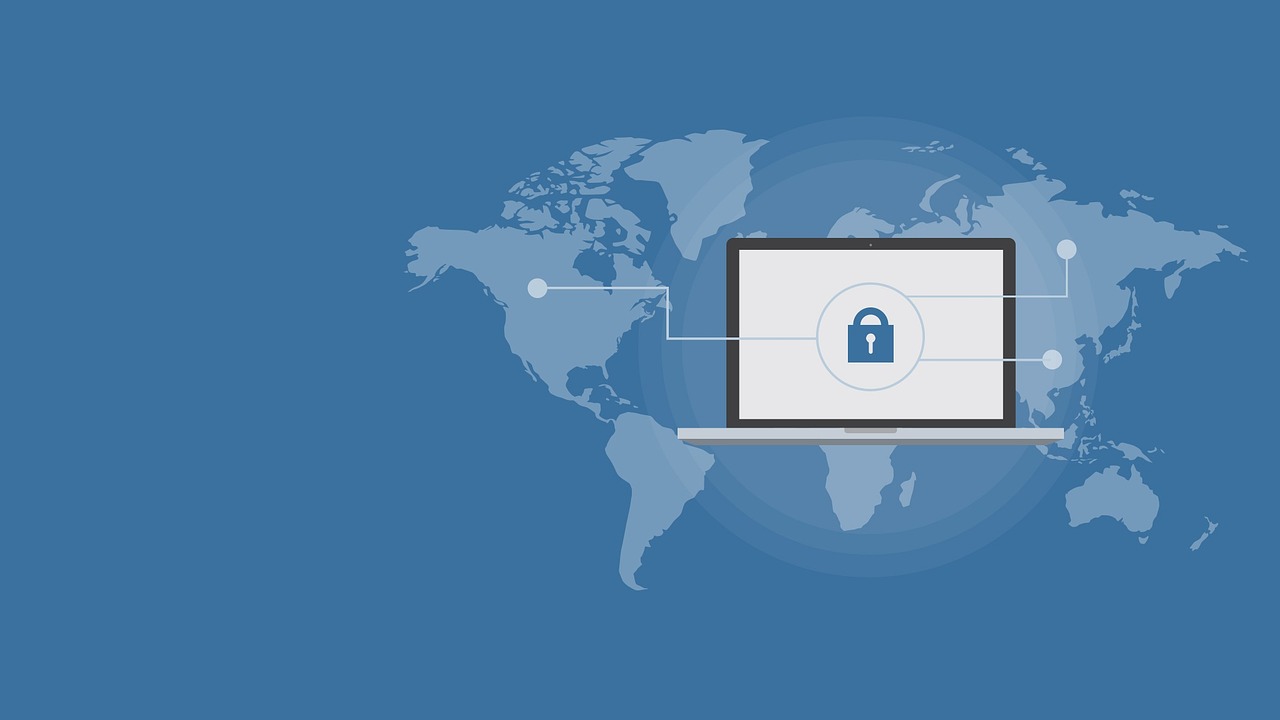
Ransomware
Ransomware is not just a buzzword in the tech world; it's a menacing reality that can turn your digital life upside down in a matter of moments. Imagine waking up one day to find that your precious files—photos, documents, and even your work—are locked away, inaccessible unless you pay a hefty ransom. This type of malware is designed to encrypt your files and demand payment, usually in cryptocurrency, to restore access. The whole ordeal can feel like a nightmare, but understanding how ransomware operates can be your first line of defense.
Typically, ransomware infiltrates your system through deceptive means, such as:
- Email attachments: Unsuspecting users may download an attachment that appears harmless but contains malicious code.
- Malicious websites: Visiting compromised websites can lead to automatic downloads of ransomware.
- Software vulnerabilities: Outdated software is like leaving a window open for intruders; they exploit these weaknesses to gain access.
Once ransomware has breached your defenses, it begins its nefarious work by encrypting files on your device and often spreading across your network to other connected devices. The attackers then display a ransom note, detailing how much you need to pay to regain access and often threatening to delete your files if you don't comply within a certain timeframe. The psychological pressure is immense, and many victims feel cornered, leading them to consider paying the ransom.
However, paying the ransom is fraught with risks. There’s no guarantee that you’ll actually get your files back, and it may even encourage further attacks. Instead, prevention is the key. Here are some effective strategies to protect yourself from ransomware:
- Regular backups: Keep copies of your important files on external drives or cloud services, ensuring they are not connected to your network when not in use.
- Antivirus software: Invest in reputable antivirus software that includes real-time protection against ransomware.
- Awareness and training: Educate yourself and your family about the signs of phishing attempts and suspicious downloads.
In conclusion, while the threat of ransomware is real and ever-evolving, being proactive can significantly reduce your risk. By understanding how it operates and implementing robust security measures, you can safeguard your digital life from these malicious attacks.
Q: What should I do if I fall victim to ransomware?
A: If you find yourself a victim, immediately disconnect from the internet to prevent further spread. Do not pay the ransom; instead, report the incident to law enforcement and seek help from cybersecurity professionals.
Q: Can I prevent ransomware attacks?
A: Yes, you can significantly reduce the risk by maintaining regular backups, keeping your software updated, using strong passwords, and being cautious about email attachments and links.
Q: Is paying the ransom a good idea?
A: Generally, it is not advisable to pay the ransom. There’s no guarantee that the attackers will restore your files, and paying may encourage them to continue their malicious activities.

Spyware
Spyware is a sneaky little villain in the world of cybersecurity, often lurking in the shadows of your home network. It operates without your knowledge, quietly collecting sensitive information from your devices. Imagine someone peeking over your shoulder while you enter your passwords or read your private messages—that's the essence of spyware. It can find its way into your system through various means, such as downloading infected software, clicking on dubious links, or even through seemingly harmless apps.
Once installed, spyware can harvest a plethora of personal information, including:
- Your browsing habits and history
- Login credentials for various accounts
- Credit card details and other financial information
- Personal messages and emails
The data collected can be incredibly damaging, leading to identity theft or financial loss. It's akin to leaving your front door wide open while you sleep, inviting intruders to waltz in and take whatever they please. So, how can you detect and remove this unwanted intruder?
Detecting spyware can be tricky, but there are some signs to watch out for:
- Unexplained slowdowns in your device's performance
- Frequent crashes or unexpected behavior
- New toolbars or programs that you didn’t install
- Redirects to unfamiliar websites when browsing
To combat spyware, it's crucial to have a robust security strategy in place. Here are some effective measures:
- Install reputable antivirus software that includes anti-spyware features.
- Regularly run scans on your devices to detect any malicious software.
- Be cautious when downloading software or clicking on links in emails.
- Educate yourself and your family about safe browsing practices.
In summary, spyware is a formidable threat that can compromise your privacy and security. By staying vigilant and employing effective security measures, you can protect your home network from these stealthy intruders. Remember, while technology can be a double-edged sword, your awareness and proactive steps are your best defenses against the lurking dangers of the digital world.
Q: What is spyware?
A: Spyware is malicious software designed to gather information from your computer or device without your knowledge, often for malicious purposes.
Q: How can I tell if I have spyware on my device?
A: Signs of spyware may include slow device performance, new programs or toolbars that you didn’t install, or being redirected to unfamiliar websites.
Q: What can I do to remove spyware?
A: Use reputable antivirus software to scan and remove spyware. Additionally, make sure to keep your software updated and be cautious about the links you click.
Q: How can I prevent spyware from infecting my devices?
A: Practice safe browsing habits, avoid downloading software from untrusted sources, and regularly update your security software to protect against new threats.
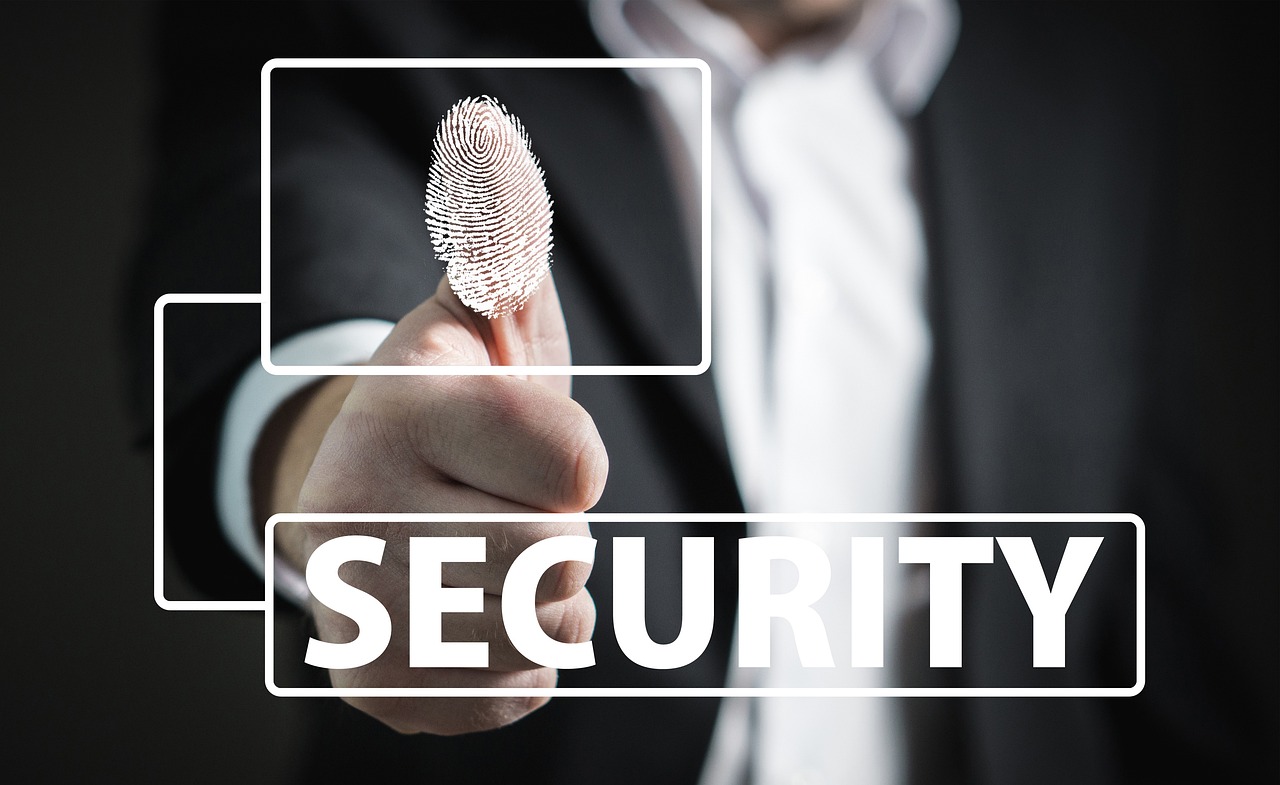
Phishing Attacks
Phishing attacks are like digital wolves in sheep’s clothing, cleverly disguised to trick unsuspecting users into revealing their most sensitive information. Imagine receiving an email that looks like it’s from your bank, complete with their logo and branding, urging you to click a link to verify your account. It’s alarming how easily these deceptive tactics can lead to compromised accounts and stolen identities. Phishing scams can occur through various channels, including emails, social media, and even text messages. They often exploit human emotions, like urgency or fear, to get you to act quickly without thinking.
So, how do these attacks work? Typically, the attacker sends a message that appears legitimate, often containing a link that redirects you to a fake website designed to mimic a trusted source. Once you enter your login credentials or other personal information, the attacker captures this data and can use it for malicious purposes. This is why it’s crucial to stay vigilant and educated about the signs of phishing. Here are some common indicators to watch out for:
- Suspicious Sender: Check the email address carefully. Often, phishing emails come from addresses that look similar to legitimate ones but have slight variations.
- Generic Greetings: Be wary of messages that use generic greetings like "Dear Customer" instead of your name.
- Urgent Language: Phishing attempts often create a sense of urgency, pushing you to act quickly without thinking.
- Unusual Links: Hover over links to see the actual URL. If it looks suspicious or doesn’t match the claimed source, don’t click it!
To defend against phishing attacks, it’s essential to adopt a proactive approach. First and foremost, never click on links or download attachments from unknown sources. If you receive a message that seems off, take the time to verify its authenticity by contacting the organization directly through official channels. Additionally, consider using security software that includes phishing protection, which can help filter out malicious emails before they reach your inbox.
In conclusion, phishing attacks are a prevalent threat in today’s digital landscape, and being aware of their tactics is your first line of defense. By staying informed and cautious, you can significantly reduce your chances of falling victim to these insidious scams.
Q1: What should I do if I suspect I've been phished?
A1: If you believe you've fallen for a phishing scam, immediately change your passwords for the affected accounts and enable two-factor authentication if available. Consider monitoring your financial statements for any unauthorized transactions.
Q2: Can phishing attacks happen on my phone?
A2: Absolutely! Phishing attacks can occur via SMS (smishing) or through apps. Always be cautious of unsolicited messages and verify the sender before clicking any links.
Q3: Are there any tools to help prevent phishing attacks?
A3: Yes! Many email providers offer built-in phishing filters, and there are also browser extensions available that can alert you to suspicious sites. Additionally, using comprehensive security software can provide an extra layer of protection.
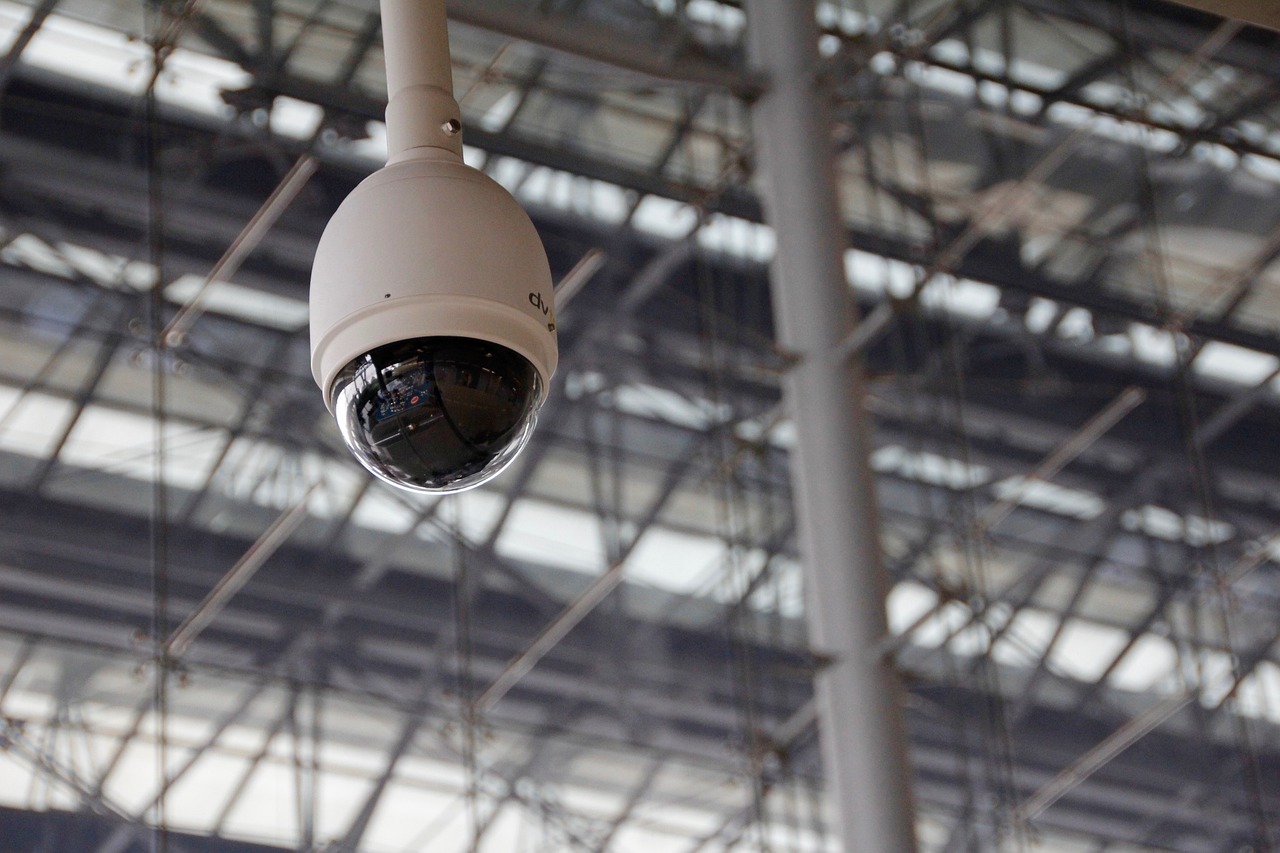
Best Practices for Securing Your Network
In today’s digital age, securing your home network is not just a good idea; it’s a necessity. With the increasing number of devices connected to the internet, from smartphones to smart refrigerators, ensuring that your network is safe from potential threats is paramount. So, how can you bolster your defenses? Here are some best practices that can help you create a robust security framework for your home network.
First and foremost, let’s talk about strong passwords. Using unique and complex passwords for each of your devices and accounts is fundamental. Think of your password as the key to your digital castle; if it's weak, intruders can waltz right in. A good password should include a mix of uppercase and lowercase letters, numbers, and special characters. Consider using a password manager to keep track of all your unique passwords securely. Additionally, enabling two-factor authentication (2FA) adds an extra layer of security. This means even if someone manages to get your password, they will still need a second form of verification to access your account.
Another critical aspect of network security is keeping your software and firmware up to date. Regular software updates are like routine check-ups for your devices; they fix vulnerabilities and enhance the overall protection of your network. Many cyber attacks exploit outdated software, so it’s essential to enable automatic updates whenever possible. This simple step can significantly reduce your risk of falling victim to a cyberattack.
Moreover, consider network segmentation. This strategy involves dividing your home network into smaller, isolated segments. For instance, you might want to keep your smart home devices on one network and your personal computers on another. This way, if one segment is compromised, the others remain secure. It’s like having different rooms in your house; if one room gets broken into, the rest are still safe.
It’s also wise to disable features that you don’t use. For example, if you don’t need remote access to your home network, turn it off. This reduces the number of potential entry points for attackers. Additionally, consider hiding your network’s SSID (the name of your Wi-Fi network). While this won’t make your network invisible, it can deter casual snoopers from attempting to connect.
Lastly, be vigilant about your network activity. Regularly check the list of devices connected to your network. If you notice any unfamiliar devices, it’s crucial to take action immediately. You can do this by logging into your router’s admin panel, where you can see a list of all connected devices. If you find any unauthorized access, change your passwords and consider resetting your router.
In summary, securing your home network requires a combination of strong passwords, regular updates, network segmentation, and vigilance. By implementing these best practices, you’ll create a formidable defense against potential cyber threats. Remember, in the world of cybersecurity, it’s always better to be proactive than reactive.
- What is the most important step in securing my home network?
Using strong, unique passwords for all devices and accounts is crucial. - How often should I update my software?
Regularly check for updates and enable automatic updates whenever possible. - What is network segmentation?
It’s the practice of dividing your home network into smaller parts to enhance security. - How can I check for unauthorized devices on my network?
Log into your router’s admin panel to see a list of connected devices.
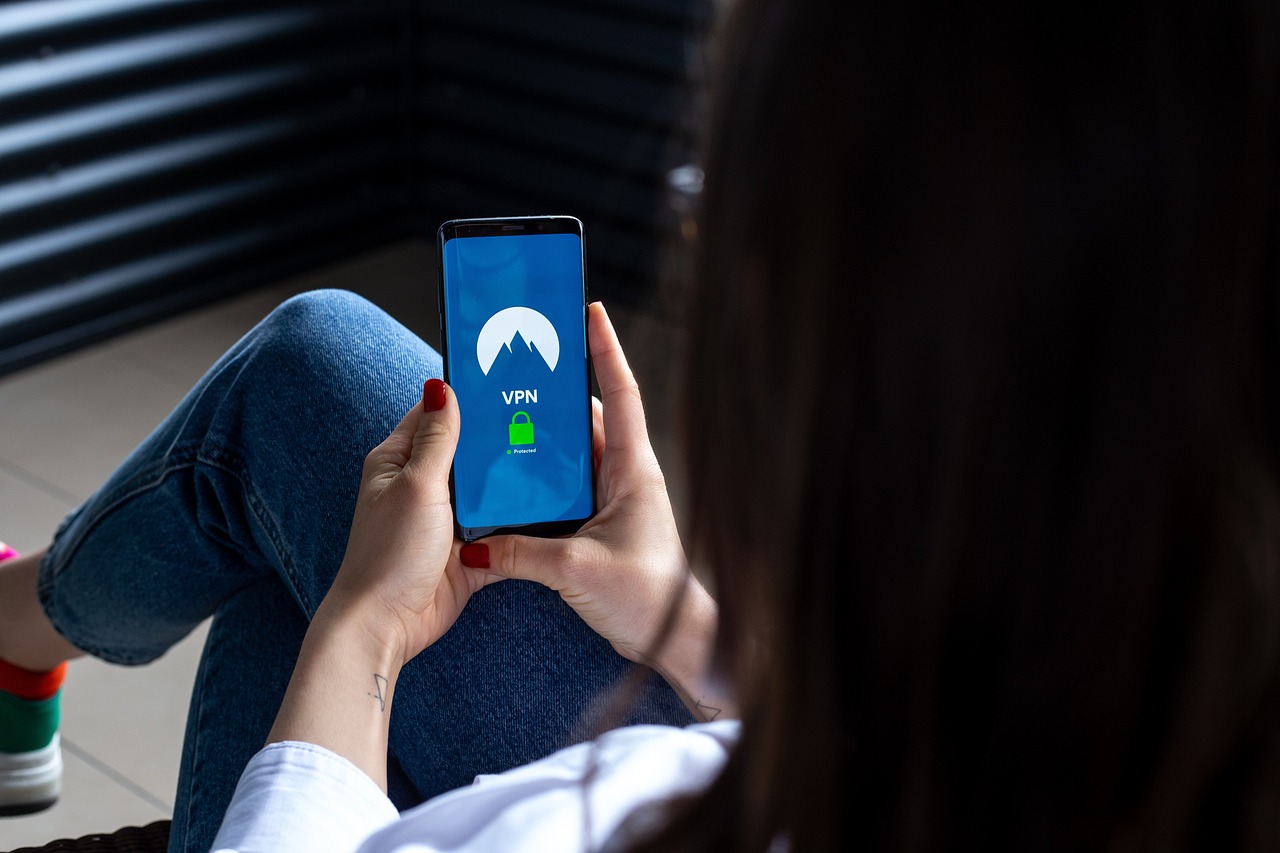
Strong Passwords and Authentication
When it comes to securing your home network, strong passwords and robust authentication methods are your first line of defense. Think of your password as the key to your digital fortress; the stronger it is, the less likely an intruder can waltz right in. Unfortunately, many people still use easily guessable passwords, like "123456" or "password," which is akin to leaving your front door wide open. To help you create an unbreakable password, consider the following tips:
- Use a mix of uppercase and lowercase letters, numbers, and special characters.
- Aim for a password length of at least 12 characters.
- Avoid using easily accessible information, such as your name or birthdate.
- Consider using a password manager to generate and store complex passwords securely.
Two-factor authentication (2FA) adds an additional layer of security that can significantly enhance your protection. Even if someone manages to crack your password, they won’t be able to access your account without the second factor, which is usually a temporary code sent to your mobile device. This is like having a second lock on your door; even if someone has the key, they still need the combination to get in.
Implementing 2FA is straightforward and can be done on most online services. Here’s how it typically works:
- Log into your account and navigate to the security settings.
- Enable two-factor authentication.
- Choose your preferred method for receiving codes (SMS, authenticator app, etc.).
- Follow the prompts to authenticate your device.
By combining strong passwords with two-factor authentication, you create a formidable barrier against unauthorized access. It's a small effort that can yield significant rewards in terms of your personal data security. Remember, the digital world is full of threats, and being proactive about your password security is one of the best ways to protect yourself.
Q1: How often should I change my passwords?
It's a good practice to change your passwords every three to six months, especially for sensitive accounts. Regular updates can help mitigate the risk of unauthorized access.
Q2: What should I do if I suspect my password has been compromised?
Immediately change your password and enable two-factor authentication if you haven't already. Also, check your account for any unauthorized activity.
Q3: Are password managers safe to use?
Yes, reputable password managers use strong encryption to protect your data. They can help you generate and store complex passwords securely, making it easier to maintain good password hygiene.
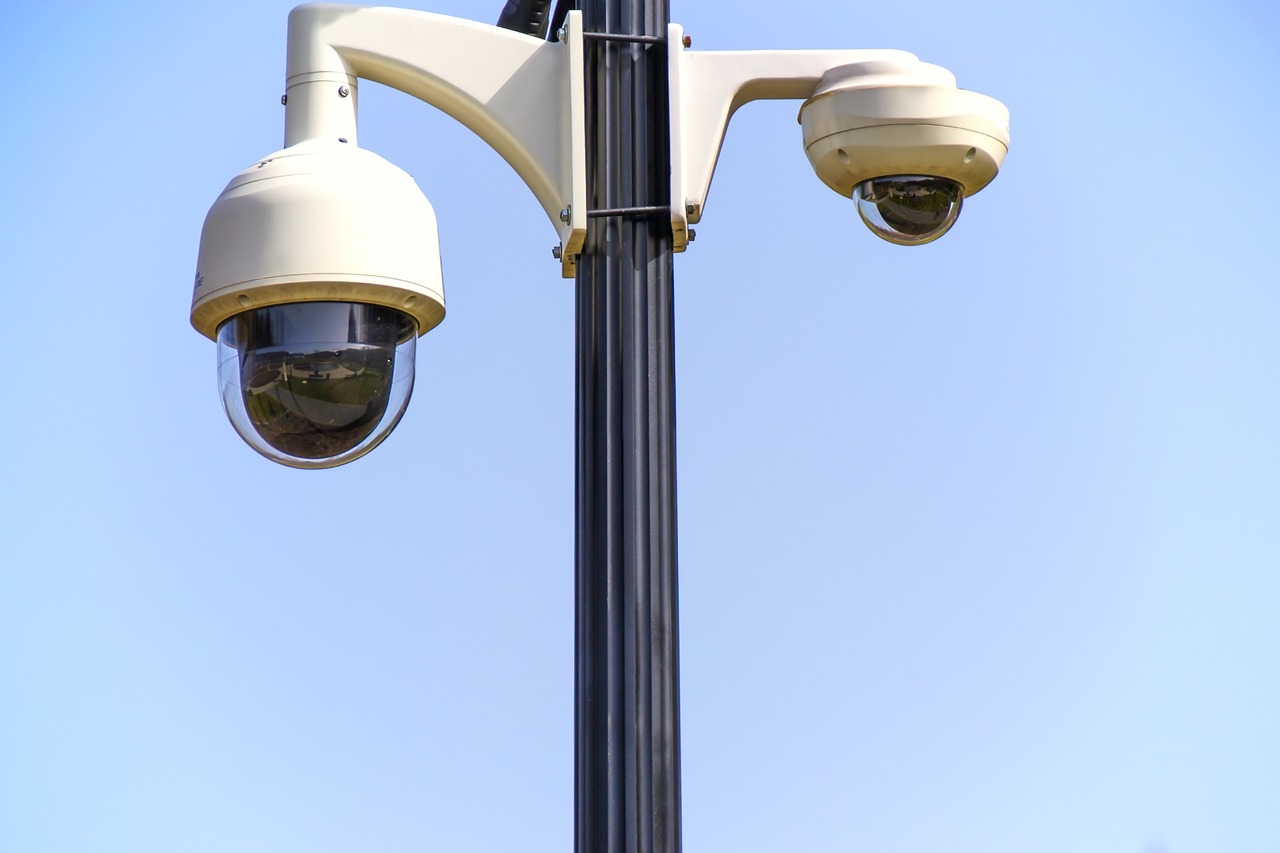
Regular Software Updates
Keeping your software and firmware up to date is one of the most critical aspects of maintaining a secure home network. Think of it like regularly changing the locks on your doors; every update is a new layer of protection against potential intruders. Software developers are constantly working to identify and fix vulnerabilities that could be exploited by cybercriminals. When you neglect these updates, you’re essentially leaving your front door wide open, inviting trouble right into your living room.
Many people underestimate the importance of these updates, often dismissing them as mere annoyances that interrupt their online activities. However, the reality is that each update often contains crucial security patches designed to fix vulnerabilities that could be exploited. For instance, a recent study showed that a significant percentage of cyberattacks target known vulnerabilities in outdated software. By keeping your software current, you’re not just protecting your devices; you’re also safeguarding your personal data.
To illustrate this point, let’s look at a few key benefits of regular software updates:
- Enhanced Security: Updates often include patches for newly discovered vulnerabilities, making it harder for hackers to gain access to your network.
- Improved Performance: Software updates can optimize the performance of your devices, ensuring they run smoothly and efficiently.
- New Features: Many updates come with new features and enhancements that can improve your user experience.
So, how can you ensure that your software is always up to date? Here are some practical tips:
- Enable automatic updates whenever possible. This way, you won’t have to remember to check for updates manually.
- Regularly check the settings of your devices and applications to ensure they are set to update automatically.
- Stay informed about the latest security threats and vulnerabilities related to the software you use.
In conclusion, making regular software updates a part of your routine can significantly enhance the security of your home network. It’s a simple step that can have profound implications for your digital safety. Remember, staying one step ahead of cyber threats is not just a good practice; it’s an absolute necessity in today’s interconnected world.
1. How often should I update my software?
It's recommended to check for updates at least once a week or enable automatic updates to ensure you are always protected.
2. What happens if I don’t update my software?
Failing to update can leave your devices vulnerable to security breaches, malware, and other cyber threats.
3. Are updates really that important?
Yes! Updates often include critical security patches that protect your devices from known vulnerabilities.
4. Can I set my devices to update automatically?
Most devices and software applications offer an option to enable automatic updates, which is highly recommended for maintaining security.
Frequently Asked Questions
- What is home network security?
Home network security refers to the measures taken to protect your personal network from unauthorized access and cyber threats. It involves implementing various strategies and tools to safeguard your devices and sensitive information from potential harm.
- Why is it important to secure my home network?
Securing your home network is crucial because it protects your personal information, financial data, and privacy from cybercriminals. A compromised network can lead to identity theft, data breaches, and unauthorized access to your devices, which can have serious consequences.
- What are common threats to home networks?
Common threats to home networks include malware, phishing attacks, and unauthorized access. Malware can infiltrate your devices, while phishing attacks trick you into revealing sensitive information. Understanding these threats is essential for implementing effective security measures.
- How can I protect my home network from malware?
To protect your home network from malware, ensure that you have reliable antivirus software installed, keep all software and firmware updated, and avoid clicking on suspicious links or downloading unverified attachments. Regularly scanning your devices can also help detect and remove malware.
- What is ransomware, and how can I prevent it?
Ransomware is a type of malware that locks users out of their files until a ransom is paid. To prevent ransomware, maintain regular backups of your data, avoid opening unknown emails, and ensure your software is up to date to protect against vulnerabilities.
- How do phishing attacks work?
Phishing attacks typically involve fraudulent emails or messages that appear to be from legitimate sources. They trick users into providing sensitive information, such as passwords or credit card details. Always verify the sender's identity and be cautious of links in unsolicited messages.
- What are the best practices for securing my home network?
Some best practices for securing your home network include using strong, unique passwords, enabling two-factor authentication, regularly updating your software, and segmenting your network to limit access to sensitive devices. These steps can significantly enhance your network's security.
- How often should I update my devices and software?
It's recommended to update your devices and software regularly, ideally as soon as updates are available. Software updates often include security patches that fix vulnerabilities, helping to protect your network from potential threats.

